ELITE TUTORING
Elite Tutoring is your ultimate destination for academic success. I offer a curated selection of high-quality study tools designed to enhance your learning experience and boost exam performance. From comprehensive study guides and interactive practice exams to expert-recommended resources, I provide everything you need to excel. Trust Elite Tutoring to turn your academic challenges into triumphs and help you pass your exams with confidence.
- 69
- 0
- 5
Community
- Followers
- Following
74 items
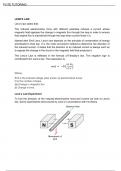
LENZ, Transformer and Faraday Law
Lenz's Law, Faraday's Law, and transformers are foundational concepts in electromagnetism. Faraday's Law states that a changing magnetic field induces an electromotive force (EMF) in a conductor. Lenz's Law extends this, stating the induced EMF opposes the change causing it. Transformers, based on these laws, transfer electrical energy between circuits through electromagnetic induction, efficiently altering voltage levels in power systems, making them crucial in electrical distribution and u...
- Summary
- • 9 pages •
Lenz's Law, Faraday's Law, and transformers are foundational concepts in electromagnetism. Faraday's Law states that a changing magnetic field induces an electromotive force (EMF) in a conductor. Lenz's Law extends this, stating the induced EMF opposes the change causing it. Transformers, based on these laws, transfer electrical energy between circuits through electromagnetic induction, efficiently altering voltage levels in power systems, making them crucial in electrical distribution and u...
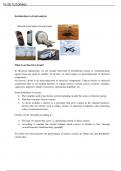
Introduction to Circuits
Introduction to circuits explores the basic principles and components of electrical systems. It involves understanding elements such as resistors, capacitors, inductors, and power sources, and how they connect to form a functional circuit. Key concepts include voltage, current, resistance, and the application of Ohm's and Kirchhoff's laws. Learning about circuits is essential for designing, analyzing, and troubleshooting electrical and electronic devices, forming the foundation for advanced en...
- Summary
- • 12 pages •
Introduction to circuits explores the basic principles and components of electrical systems. It involves understanding elements such as resistors, capacitors, inductors, and power sources, and how they connect to form a functional circuit. Key concepts include voltage, current, resistance, and the application of Ohm's and Kirchhoff's laws. Learning about circuits is essential for designing, analyzing, and troubleshooting electrical and electronic devices, forming the foundation for advanced en...
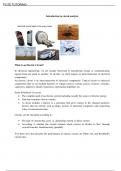
INTRODUCTION TO CIRCUIT ANALYSIS
Introduction to circuit analysis involves understanding how electrical circuits function by examining the relationships between current, voltage, and resistance. Key concepts include Ohm's Law, Kirchhoff's Voltage and Current Laws, and the use of techniques like mesh and nodal analysis. Circuit analysis is fundamental for designing, troubleshooting, and optimizing electrical systems, providing the foundation for advanced study and practical application in various electrical and electronic engi...
- Summary
- • 10 pages •
Introduction to circuit analysis involves understanding how electrical circuits function by examining the relationships between current, voltage, and resistance. Key concepts include Ohm's Law, Kirchhoff's Voltage and Current Laws, and the use of techniques like mesh and nodal analysis. Circuit analysis is fundamental for designing, troubleshooting, and optimizing electrical systems, providing the foundation for advanced study and practical application in various electrical and electronic engi...
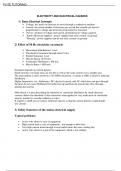
ELECTRICITY AND ELECTRICAL HAZARDS
Electricity powers countless devices and systems but poses significant hazards. Electrical hazards include shock, burns, and fires caused by exposure to live wires, faulty equipment, or improper handling. Understanding these dangers and implementing safety measures is essential to prevent injuries and ensure safe usage of electrical systems and appliances.
- Summary
- • 1 pages •
Electricity powers countless devices and systems but poses significant hazards. Electrical hazards include shock, burns, and fires caused by exposure to live wires, faulty equipment, or improper handling. Understanding these dangers and implementing safety measures is essential to prevent injuries and ensure safe usage of electrical systems and appliances.
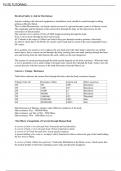
Electrical Safety
Electrical safety is crucial for electricians to prevent accidents, injuries, and fatalities. It involves adhering to proper protocols, using personal protective equipment, and ensuring circuits are de-energized before work. Awareness and compliance with safety standards protect both workers and the integrity of electrical systems, ensuring reliable and secure operations.
- Summary
- • 3 pages •
Electrical safety is crucial for electricians to prevent accidents, injuries, and fatalities. It involves adhering to proper protocols, using personal protective equipment, and ensuring circuits are de-energized before work. Awareness and compliance with safety standards protect both workers and the integrity of electrical systems, ensuring reliable and secure operations.
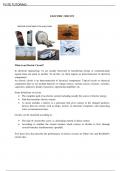
ELECTRIC CIRCUIT
An electric circuit is a closed loop that allows current to flow through various components, such as resistors, capacitors, and transistors. It comprises a power source, conductors, and loads. Circuits are fundamental to powering devices and systems, enabling controlled electrical energy flow and functionality in various applications.
- Summary
- • 10 pages •
An electric circuit is a closed loop that allows current to flow through various components, such as resistors, capacitors, and transistors. It comprises a power source, conductors, and loads. Circuits are fundamental to powering devices and systems, enabling controlled electrical energy flow and functionality in various applications.
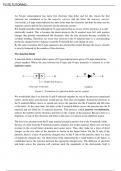
Diode law
Diode Law describes the current-voltage relationship in a diode, governed by the Shockley equation. It states that the current through a diode exponentially increases with forward voltage and remains minimal in reverse bias. This law is fundamental for understanding diode behavior in rectifiers, signal modulation, and voltage regulation applications.
- Class notes
- • 5 pages •
Diode Law describes the current-voltage relationship in a diode, governed by the Shockley equation. It states that the current through a diode exponentially increases with forward voltage and remains minimal in reverse bias. This law is fundamental for understanding diode behavior in rectifiers, signal modulation, and voltage regulation applications.
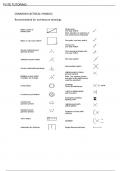
COMMON ELECTRICAL SYMBOLS
Common electrical symbols represent components in circuit diagrams. Key symbols include resistors (zigzag lines), capacitors (parallel lines), diodes (triangle and line), transistors (circles with arrows), and ground (line with three descending lines). These symbols standardize circuit representation, simplifying analysis, communication, and construction of electrical systems.
- Summary
- • 1 pages •
Common electrical symbols represent components in circuit diagrams. Key symbols include resistors (zigzag lines), capacitors (parallel lines), diodes (triangle and line), transistors (circles with arrows), and ground (line with three descending lines). These symbols standardize circuit representation, simplifying analysis, communication, and construction of electrical systems.
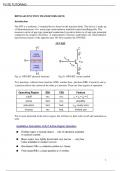
BIPOLAR JUNCTION TRANSISTORS
Bipolar Junction Transistors (BJTs) are semiconductor devices with three layers: emitter, base, and collector. They function by controlling current flow through two p-n junctions. BJTs operate in two modes: NPN and PNP, defined by their doping types. They amplify current, making them essential in switching and amplification applications. Understanding BJTs is crucial for designing and analyzing circuits in amplifiers, oscillators, and other electronic devices.
- Class notes
- • 8 pages •
Bipolar Junction Transistors (BJTs) are semiconductor devices with three layers: emitter, base, and collector. They function by controlling current flow through two p-n junctions. BJTs operate in two modes: NPN and PNP, defined by their doping types. They amplify current, making them essential in switching and amplification applications. Understanding BJTs is crucial for designing and analyzing circuits in amplifiers, oscillators, and other electronic devices.
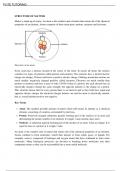
BASIC ELECTRONICS
Basic electronics involves the study and application of electrical components and circuits. It encompasses understanding components like resistors, capacitors, diodes, and transistors, and their functions in circuits. Fundamental principles include Ohm's Law, Kirchhoff's Laws, and the behavior of AC/DC currents. Basic electronics forms the foundation for designing, analyzing, and troubleshooting electronic devices and systems, crucial for advancements in technology and everyday electronic appl...
- Class notes
- • 15 pages •
Basic electronics involves the study and application of electrical components and circuits. It encompasses understanding components like resistors, capacitors, diodes, and transistors, and their functions in circuits. Fundamental principles include Ohm's Law, Kirchhoff's Laws, and the behavior of AC/DC currents. Basic electronics forms the foundation for designing, analyzing, and troubleshooting electronic devices and systems, crucial for advancements in technology and everyday electronic appl...
